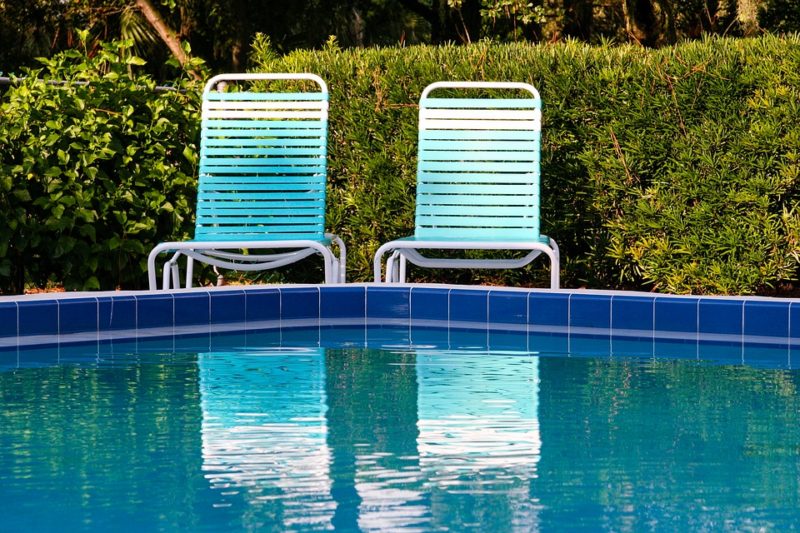Are you wondering how to install pool heater? Stop scratching your head and read this systematic guide to find a solution.
Pool heaters are excellent, they warm the water, and you can keep the swimming game on, especially if you have replaced your workout routine with swimming to stay fit and keep your body in good shape.
But before starting the DIY guide on pool heater installation. We want to tell you that the warranty of heater parts is five years if you get it installed professionally. Alternatively, the company gives a guarantee of only two years if you install the heater yourself without the help of a technician.
Steps To Install Pool Heater
It’s time to start our guide on how to install pool heater without adding any extra detail. You had to follow each step and safety instruction to ensure that the installation has done correctly. Let’s begin!
Step #1. Remove the old one
Firstly, unhook the old heater if you haven’t done so. Turn off the breaker from the circuit box. Take a pair of pliers and lose a nut from the inlet and outlet pipes. Disconnect the heater from the lines and the front panel. Lastly, take out the insulating plate to access the cable. Pull the line and disconnect the wires from their terminals and the ground screw. Also, open the bonding wire from the outer side of the heater.
Step #2. Positioning and clearance
All the things come second after placement and clearance while installing a pool heater. Firstly you have to ensure that the pool pump and filter have been installed before the heater. Then hook up the chlorinator after having done with these three appliances. Next, you have to connect the heater to a position from where the pool plumbing is nearly 3 feet. Take care that you have left a clearance of 1 foot from the sides 3 feet from the front and top sides of the heater. The release is not a thing to ignore, as proper ventilation is the key to the performance of a pool heater or heat pump.
Step #3. Place and connect the new heater
Place the new heater on a concrete block or timber decking. The strong base will protect the building from shock in case of vibration. Remove the screws from the front service panel to access the couplings and documentation. A plastic packet includes a warranty card and user manual alongside plumbing connectors and two screws. Now you have to connect the plumbing connectors with the sealing gaskets. Attach the elbow joints with the gaskets from one side and the water pipes from the other side. Apply the PVC glue for a safe and secure connection. You may also be interested to know how to plumb a pool heater.
Step #4. Attach the wirings
Now you have to slide wirings with electrical conduit on them. Firstly, pass the cable through a knock-out housing at the bottom of the heater. Then you have to open a door and slide the line inside the housing. Connect the two red wires with the L1 and L2 terminals and the green ground wire with the ground screw. That’s all about the connections inside the heater’s body. Next, you have to attach one side of the bonding wire on the outer side and another with a bonding wire from the system with a split nut. Don’t get confused between bonding and ground wires while connecting.
Things To Keep In Mind
Pipes: Use rigid and robust PVC pipes instead of soft or flexible tubes. Check the user manual for correct sizes before buying the elbow joints and plumbing connectors.
Plumbing: More friction will produce in the pipes if the heater is too far from the pool. Or if you used a lot of elbow joints.
Electric connection: The voltage of the heater and your home must be in accordance, and don’t forget to allocate a separate breaker for the heater.
Variable speed pump: The variable speed pump helps the heater start and thus cuts down the electricity bills.
Bypass valve: A set of three shut-off valves is collectively known as a bypass valve that is especially helpful during the winter season. It stops the flow of water through the heater.
Condensation: Don’t get worried about the small amount of water accumulating at the base of the heater. This water is a byproduct of condensation. Place the heater on the ground with holes that will allow the water to pass through. Moreover, you can connect a hose with the water outlet tube to direct the water away from the heater.
Conduit: Attach an electrical pipe over the wirings to save them from lizards, bugs, etc. Also, the wirings without a tube can short the heater parts.
Heat exchanger: Use a heat exchanger of 70 GPM that doesn’t require a manual bypass.
It’s A Wrap!
We hope you have understood how to install pool heater. But you must know each and everything related to pool heaters, how to turn them on and how pool heaters work, so you don’t have to worry about anything in the future. We tried our best to clear your confusion and provide you with a professional guide. You may want to read related articles; know how to turn on a pool heater and how long does a pool heater lasts.

